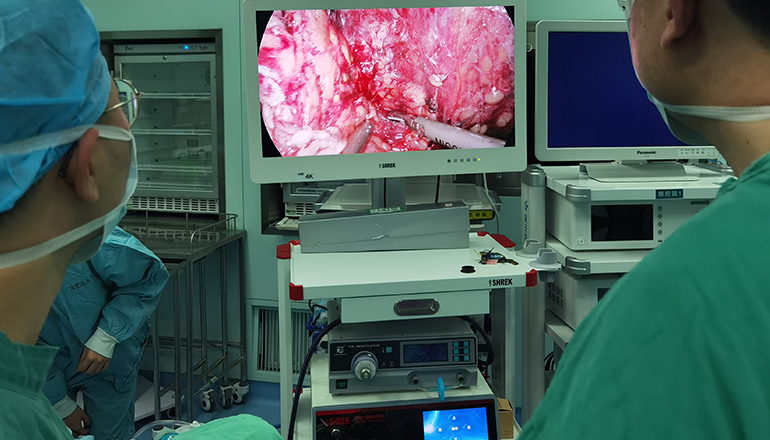- Shanghai, China
- [email protected]
- +86-21-58189111
Laparoscopic adrenalectomy is a minimally invasive surgical technique used to remove one or both adrenal glands, which are located above the kidneys and produce hormones that regulate metabolism and blood pressure. Laparoscopic adrenalectomy is a safe and effective procedure that offers several benefits over traditional open surgery, including less pain, reduced scarring, and a shorter recovery time.
During the procedure, the patient is placed under general anesthesia and placed in a position that allows the surgeon access to the adrenal gland. A small incision is made near the navel, and a laparoscope is inserted through the incision. The laparoscope is a thin, flexible tube with a camera and light at the end, allowing the surgeon to view the surgical field on a monitor. Additional small incisions are made to insert instruments to manipulate and remove the adrenal gland.
The surgeon carefully dissects the adrenal gland and its blood vessels, preserving as much healthy tissue as possible. The gland is then carefully removed through one of the small incisions, usually with the help of an instrument called a specimen bag. The small incisions are then closed with sutures or surgical glue, and the patient is monitored in the recovery room before being discharged home.

There are two approaches to laparoscopic adrenalectomy: the transabdominal approach and the retroperitoneal approach. The transabdominal approach is the most common technique and involves accessing the adrenal gland through the abdominal cavity. The retroperitoneal approach involves accessing the adrenal gland through the back, behind the abdominal cavity. The choice of approach depends on several factors, including the size and location of the adrenal gland and the surgeon's experience and preference.
Laparoscopic adrenalectomy is a safe and effective procedure with a low risk of complications. However, as with any surgical procedure, there are risks involved, including bleeding, infection, and injury to surrounding structures such as the spleen or kidney. It is important for patients to discuss the risks and benefits of the procedure with their healthcare provider and to follow postoperative instructions carefully to ensure a successful outcome.
In conclusion, laparoscopic adrenalectomy is a minimally invasive surgical technique used to remove one or both adrenal glands. The procedure offers several benefits over traditional open surgery, including less pain, reduced scarring, and a shorter recovery time. Proper patient selection, surgical technique, and follow-up care are essential to ensuring a successful outcome. With the appropriate care and attention, patients can experience a positive outcome from laparoscopic adrenalectomy.
Laparoscopic adrenalectomy is a highly effective treatment option for patients with adrenal tumors or other conditions that require removal of the adrenal gland. It has become the preferred technique for most cases due to the many benefits it offers, including a shorter hospital stay, less pain, and faster recovery times. However, as with any surgery, it is important to discuss the risks and benefits with a healthcare provider to determine if laparoscopic adrenalectomy is the best option for an individual patient's situation.
In addition to removing adrenal tumors, laparoscopic adrenalectomy can also be used to treat other conditions such as Cushing's syndrome, Conn's syndrome, and pheochromocytoma. These conditions are caused by hormone-producing tumors in the adrenal gland, which can lead to a range of symptoms and complications if left untreated.
Overall, laparoscopic adrenalectomy is a highly effective and minimally invasive surgical technique that offers many benefits over traditional open surgery. It is a safe and well-tolerated procedure with a low risk of complications and a high success rate. As with any surgery, however, it is important for patients to carefully follow postoperative instructions and attend follow-up appointments to monitor their progress and address any concerns. With the appropriate care and attention, patients can experience a successful outcome from laparoscopic adrenalectomy.
Leave a Comments